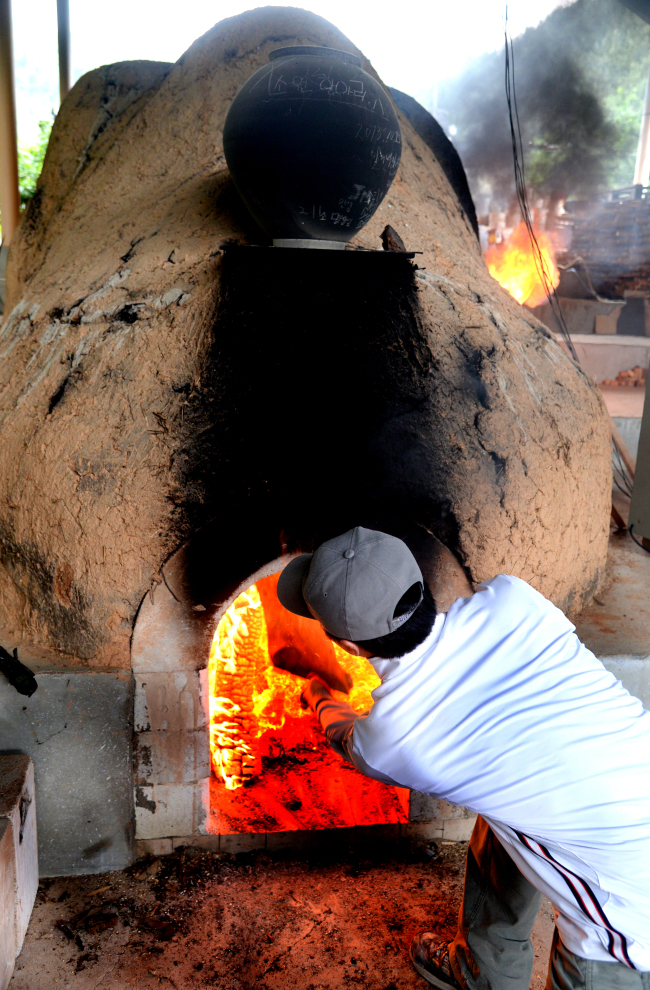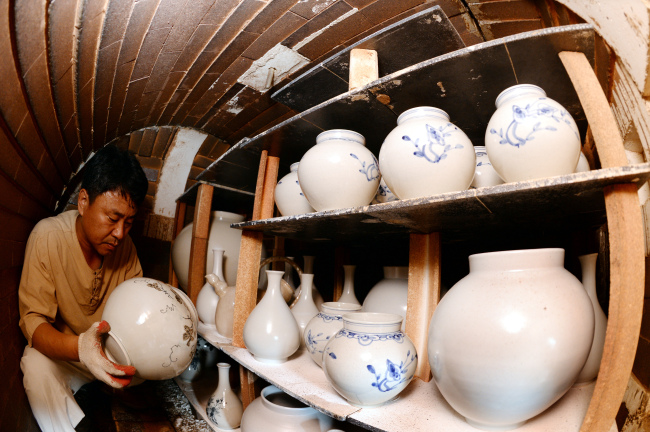More often, beauty is found in things that are simple and naive, or thrifty and pure, rather than with a fancy appearance.
Among porcelains, plain white porcelains from the Joseon era are viewed as the most beautiful, as opposed to splendid blue porcelains during the Goryeo kingdom.
The No. 309 and No. 310 national treasures are widely called Dal Hangahri, meaning moon-shaped porcelains. Made of white clay and glazed with milk-color enamel, the porcelains resemble the moon against a dark sky.
 |
(Park Hyun-koo/The Korea Herald) |
How difficult would it be to produce impeccable white out of soil consisting of thousands of impurities?
The answer was found in a kiln at the Baekja Museum in Yanggu County, Gangwon Province.
It takes about five days for a white porcelain to emerge after being baked in the kiln at temperatures hovering around 1,300 degrees Celsius.
 |
(Park Hyun-koo/The Korea Herald) |
Bangsan-myeon, where the museum is located, is known for high quality white clay and pottery stones, according to Chung Doo-seob, head of the Yanggu Museum.
“Owing to the outstanding quality of the materials, Bangsan has been the only village in the country that continued production of white porcelains for about 600 years from the Goryeo kingdom through the 20th century,” Chung said.
The white porcelains produced here were supplied for the royal families of the Joseon era for 500 years, he said.
 |
(Park Hyun-koo/The Korea Herald) |
There are dozens of porcelain kilns in the village in the vicinity of Geumgangsan.
For porcelains, kaolin clay with silicic acid is needed as a main ingredient to make porcelain figures shine like gems with metallicity. People during the Joseon era knew such characteristics of the special clay and used fire with temperatures between 900 degrees Celsius and 1,500 degrees Celsius.
The Dal Hangari represents the unique beauty of plain white, an ultimate beauty sought by the Korean people. Soft roundedness of the porcelain conveys abundance and generosity.
The upper and bottom parts of the porcelain are made separately and put together to express the roundedness, sending a message of harmony, respect and understanding between two different parties.
 |
(Park Hyun-koo/The Korea Herald) |
Photos by Park Hyun-koo
Written by Song Su-hyun











